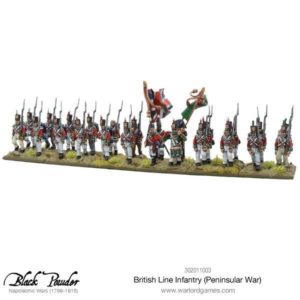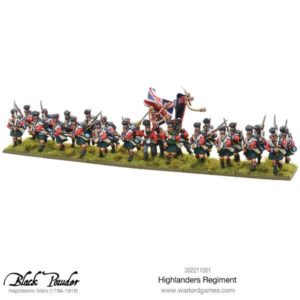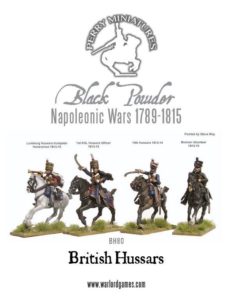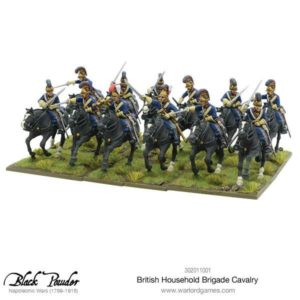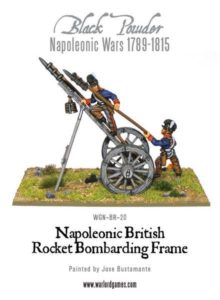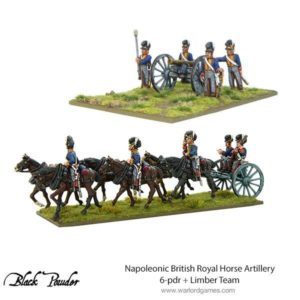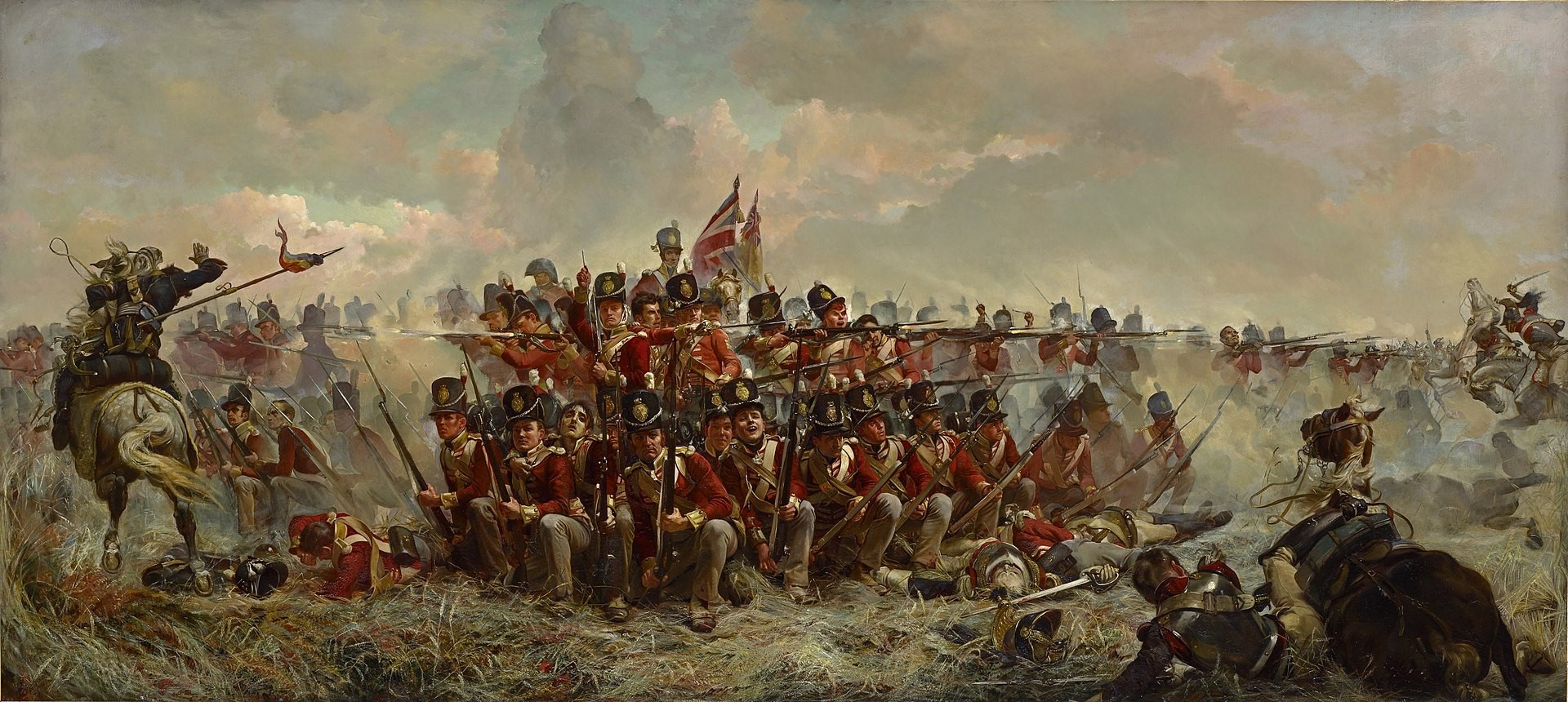
“the scum of the earth; it is really wonderful that we should have made them to the fine fellows they are.”
– Wellington
Why? Surely the question is Why not?? They won the war of course! (with a little bit of help from a few Allies). Who can resist those resplendent red coats or the colourful highlanders which represent a challenge to the best of painters?
Where to start?
Firstly, you need get some idea of what scale and rules you would like to use. You will need to consider the size of battle you are aiming for and quantity of figures you hope to field. This will then give you some idea of the army organisation size of regiments. Once you have worked that out then the fun can really start. During the Napoleonic period there were essentially three main service arms which you need to use in conjunction with each other. The art is therefore achieving a balanced force. These three arms of service were the Infantry, the Artillery and the Cavalry. Each of these come in a range of sub-types which we will go into more detail later.
For the British the primary unit was the infantry. This was because most of the battles were fought far from home and the logistics involved severely restricted the numbers of the cavalry and to a lesser extent the artillery due to the difficulty of transporting horses. The British Army of the time also has access to several unique and interesting units, such as the Highlander’s and the Rifles. Significant numbers of troops were also raised from expatriate German personnel.
The Infantry
The basic building block of the infantry is the battalion. A battalion was made up of ten companies each with a theoretical strength of around 80 men but in practice this was often much lower. The first company consisted of the largest and fittest men and was designated the Grenadier company. These chaps had epaulettes on their shoulders to show off their superior status. They held the right flank of the battalion when deployed in line.
The last company holding the left flank was designated a light or skirmishing company and consisted of the more able men that were also respectable shots. They were able to skirmish in front of the line, but I understand from a higher authority that they did not do this often. To represent this in a 24-figure regiment you could have 2 figures at each end painted appropriately or perhaps more if the campaign you are fighting has reduced strength in the line companies. There is a lot of information from the web and reference books if you wish your army to be historically accurate.
The bulk of the infantry were regular line units but there were also several Guards and Highland battalions. There were also a small number of Light infantry battalions the most notable of which were the 95th Rifles brought to fame in the Sharpe television series.
Several Battalions were normally grouped together into a Brigade and two or more Brigades into a Division. The other two arms of service were often attached to such larger units though occasionally they were also formed into larger units.
- British Line Infantry
- Highlanders Regiment
The Cavalry
The basic building block of the cavalry was the regiment, which was made up from several squadrons. The cavalry was primarily of two main types which was linked to their function. The first was the light cavalry whom scouted ahead of the army looking for the enemy. During the battle they would normally be used to harry the enemy and wait to pounce once they were broken. The heavy cavalry on the other hand were normally mounted on better quality horses and used in a more aggressive fashion on the battlefield.
Like the infantry a few cavalry regiments could be formed into brigades or on occasions a division such as at Waterloo. The famous charge by the heavy cavalry division successfully drove off a French infantry division that and the raced on to assault the Grand Battery but suffered heavy casualties from French cavalry counter attack.
- Light Cavalry
- Heavy Cavalry
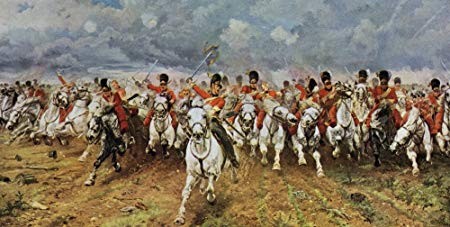
The Artillery
The artillery was primarily organised into batteries and came in two main types, the Foot artillery with larger heavier guns whom primarily supported the infantry and the Horse artillery which had lighter guns and moved around the battlefield more quickly in support of the cavalry. A special mention must also go to the batteries Congreve Rockets whom ad flavour (along with a bit of random nervousness to the user).
- Congreve Rockets
- Horse Artillery
The Gentlemen in charge
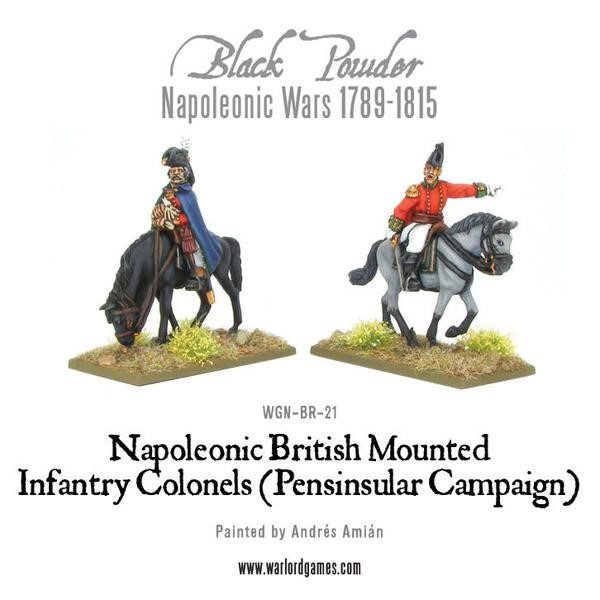 Finally, you need some fine example of the British upper classes to make all the wrong decisions and whom you can blame when it all falls apart! (Apart from old Wellington of course).
Finally, you need some fine example of the British upper classes to make all the wrong decisions and whom you can blame when it all falls apart! (Apart from old Wellington of course).

